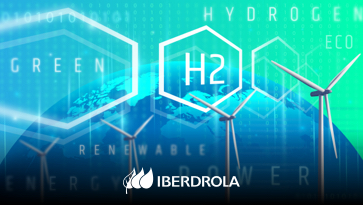
Driving Clean Energy Innovation: Electrolyzer Green Hydrogen
A Breakthrough in Sustainable Energy
Electrolyzer green hydrogen represents a groundbreaking advancement in the realm of sustainable energy production. By utilizing electrolysis, this innovative technology produces hydrogen gas from water, offering a clean and renewable energy source that can be used for various applications, including fuel cells, transportation, and industrial processes.
Understanding Electrolyzer Technology
At the heart of electrolyzer green hydrogen production is electrolysis, a process that involves passing an electric current through water to split it into hydrogen and oxygen gases. This process occurs within the electrolyzer device, which consists of two electrodes immersed in an electrolyte solution. When an electric current is applied, water molecules are split, with hydrogen gas produced at the cathode and oxygen gas at the anode.
Advantages of Green Hydrogen
One of the key advantages of electrolyzer green hydrogen is its environmental sustainability. Unlike conventional methods of hydrogen production, which often rely on fossil fuels and emit greenhouse gases, electrolyzer green hydrogen is produced using renewable electricity sources, such as solar or wind power. This results in zero emissions and helps to reduce the carbon footprint associated with energy production.
Versatility and Applications
Electrolyzer green hydrogen has a wide range of applications across various industries. In the transportation sector, hydrogen fuel cells powered by green hydrogen offer a clean alternative to traditional gasoline and diesel engines, with zero emissions and long-range capabilities. In the industrial sector, green hydrogen can be used as a clean fuel for heating, power generation, and chemical processes, replacing fossil fuels and reducing environmental impact.
Integration with Renewable Energy
One of the most promising aspects of electrolyzer green hydrogen is its integration with renewable energy sources. By pairing electrolyzers with renewable energy systems, excess energy generated from solar or wind power can be used to produce hydrogen through electrolysis. This helps to address the intermittency and variability of renewable energy sources, providing a reliable and sustainable energy solution.
Challenges and Opportunities
While electrolyzer green hydrogen holds great promise for the future of clean energy, there are still challenges to overcome, such as cost, scalability, and infrastructure development. However, these challenges also present opportunities for innovation and investment in research and development. By addressing these challenges and seizing opportunities, the potential for electrolyzer green hydrogen to transform the energy landscape is immense.
Policy Support and Incentives
Policy support and incentives play a crucial role in driving the adoption of electrolyzer green hydrogen technology. Governments around the world are implementing policies to promote renewable energy and reduce greenhouse gas emissions, providing financial incentives, subsidies, and regulatory frameworks to support the development and deployment of green hydrogen technologies.
Collaboration and Knowledge Sharing
Collaboration and knowledge sharing are essential for advancing electrolyzer green hydrogen technology. Industry stakeholders, research institutions, and government agencies come together to share best practices, lessons learned, and technological advancements. This collaborative approach accelerates progress towards the commercialization and widespread adoption of green hydrogen technologies.
Global Impact and Sustainability
Electrolyzer green hydrogen has the potential to have a significant global impact on sustainability and climate change mitigation. By replacing fossil fuels with clean hydrogen, we can reduce greenhouse gas emissions, improve air quality, and mitigate the impacts of climate change. Additionally, electrolyzer green hydrogen can contribute to energy security and resilience by diversifying energy sources and reducing reliance on imported fuels.
Conclusion
In conclusion, electrolyzer green hydrogen represents a transformative technology with the potential to drive clean energy innovation and accelerate the transition to a sustainable and low-carbon future. By harnessing the power of electrolysis and renewable energy, green hydrogen offers a clean, versatile, and scalable energy solution that can help address the urgent challenges of climate change and environmental degradation.




